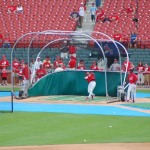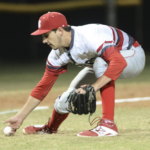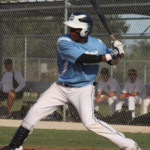Pitcher Safety Part II – Post Pitching Recovery
Similar to the controversy surrounding the use and over use of youth pitchers, the debate of whether pitchers should use ice after a start rages on in some circles. Many pitchers (including myself) just iced because it’s what we are supposed to do. Many pitchers ice because they are afraid not to. Some truly believe in the benefits and some will never know pitching without it.
On the other hand, many pitchers do not ice after starts. Some pitchers don’t ice because they do not have access to it, some don’t like the way it makes their arms feel, and some don’t do it simply because they are lazy.
I will preface this by saying that I am not a doctor, athletic trainer, or physical therapist. The findings I am reporting in this article are simply based on the research of others and are based on my reading and experiences as a player and a coach.
It is important to note that if the player has an acute injury to his arm such as getting hit by the baseball, a ligament sprain or muscle pull, they should be highly encouraged to ice. It is true that ice may be more effective for acute injuries such as those, and it may not be as effective for eccentric injuries (repetitive deceleration) such as throwing a large number of pitches. Understand that the type of injury that occurs after after pitching is a delayed onset muscle soreness, which is essentially micro-tears of the muscle. This type of soreness usually peaks 24-48 hours after use and is characterized by stiffness of the muscle and joint. This type of soreness after pitching is totally normal.
Since ice causes constriction and stiffness of the muscles and joints by constricting blood flow, it may not be the best modality to use after pitching. There are several other options a pitcher has to decrease the amount of time that he is sore after and extended outing.
1.) Proper warm-up prior to throwing (in order)
a.) Start with an activity that will get the heart rate up, light jogging or other baseball activity
b.) Dynamic stretching (most done at 10-20 yards)
i.) High Knees
ii.) Butt Kicks
iii.) Karaoke
iv.) Lunge Twists
v.) Skip Series
vi.) Side shuffles
vii.) Jog to sprint series
c.) Core activation and warmup
i.) Core twists
ii.) Twisting yoga poses (Check out your baseball yoga program here)
iii.) Med-Ball exercises
d.) Arm tubing
i.) Internal rotation
ii.) External rotation
iii.) Scap Squeeze
iv.) Iron Cross
2.) Refuel your body
a.) Eat something high in carbs and protein within 30 minutes of pitching
b.) Eat a balanced meal within 2 hours of pitching
3.) Next day stretching
a.) Shoulder girdle stretches prior to any activity
b.) Shoulder tubing prior to any activity
4.) Monitor post pitching practice and game activity
a.) Give your two-way players lighter throwing work loads in the two days after pitching
b.) Give a day off or game off if possible
c.) Try to avoid allowing pitchers to catch on a regular basis
Research shows that there are more (and possibly better) ways to recover from a start than to ice. Encourage pitchers to experiment with their post throwing routines (including ice) to find the one that works the best for them.
For more great baseball coaching info check out our Cornerstone Elite membership
References:
Yeager, D.W. (2011). An alternative to ice: A more comprehensive method to post pitching recovery. Retrieved from www.baseballstrengthcoaching.com.
ASMI position statement on youth pitching. (2012). Retrieved from http://www.asmi.org/asmiweb/position_statement.htm.
Lyman S, Fleisig GS, Andrews JR, Osinski ED (2002). Effect of pitch type, pitch count, and pitching mechanics on risk of elbow and shoulder pain in youth baseball pitchers. The American Journal of Sports Medicine, 30, 463-468.
More from my site
 CCA Podcast 093: Maximizing your batting practice routine
CCA Podcast 093: Maximizing your batting practice routine Success in Single Elimination Baseball
Success in Single Elimination Baseball CCA Podcast 072 – Part 3 of 3 of playing great team defense
CCA Podcast 072 – Part 3 of 3 of playing great team defense CCA Podcast 115 – 5 components of hitting
CCA Podcast 115 – 5 components of hitting In season hitting instruction
In season hitting instruction CCA Podcast 185 – Q and A Sneak Peek – Should I shift in high school baseball?
CCA Podcast 185 – Q and A Sneak Peek – Should I shift in high school baseball?
 Posted by Kyle Nelson
Posted by Kyle Nelson- Posted in Coaching Philosophy, Conditioning, Parents, Pitching
 Dec, 22, 2012
Dec, 22, 2012 4 Comments.
4 Comments.
Elite members login here
Check out what’s New/Hot!
Recognizing, Diagnosing, and Fixing Common Hitting Flaws eCourse The 3 metrics we tested on Blast motion sensors this year Sneak Peek Inside an Elite Q and A The batting practice continuum Elite Member’s area table of contents 50+ “Chaos” hitting drills
5 sample Chaos hitting drills FREE
Mental Skills and Culture Building The hitting pyramid Welcome Elite Member, Trey! Ideas for a pitcher first practice 12 week bat speed improvement plan Make plans this offseason to have your team playing their best baseball at the end of the year” Top 5 hitting drills to translate practice skill to game performanceHow we used Blast Motion sensors with a team in 2019
What to do if your hitters are overmatched Welcome Elite Member, Tommy! Setting your baserunners up for success Welcome Elite Member, Mike! A consulting call with Elite Member Matt FREE Web Clinic: Developing Athletic, Consistent, Extraordinary Infielders
 Coach Kyle Nelson
Coach Kyle Nelson
Post game arm care depends on what kind of pitcher you are. If you throw a lot of fastballs you may not need ice. If you throw a lot of breakingballs, you are going to need ice because the trauma to the elbow and shoulder will inflame those joints. If you don’t ice, you will have inflamation which will need care (getting blood to move in those joints) by stretching, massaging, tubing or whatever works for the individual.
It also depends on how many pitches are thrown and whether the pitcher plays other positions, etc., etc.
I agree that post game therapies are different for each situation and each arm. There are so many factors that go into arm care but there is no one magic formula. All you can do as a coach or trainer is get your player in-shape physically and mentally and let em play. Injuries happen. Soreness is part of sport but a good coach should be able to tell when a pitcher is ‘laboring’ or when a player is not being honest about his arm. A ‘tired arm’ should never be pushed. That is just ignorance. Always look for the elbow dropping below the shoulder and the pitches ‘running high and away’.
These are indicators that its time to pull that pitcher and let his arm rest and recover.
MW
Thank you for your comment. I am particularly interested in your comment about the difference between power pitchers and breaking ball pitchers. I am constantly looking for more research to expand my knowledge base. If you have an article or other material you could direct me to it would be greatly appreciated.
Thanks again for reading and for your feedback.
Here is an article I just read on how ice impedes recovery time http://drmirkin.com/fitness/why-ice-delays-recovery.html
I’ve also recently read a few that suggest foam rolling and, or light band work to speed up recovery after pitching
[…] Our article on post pitcher recovery – This article includes whether a pitcher should ice or not, and different modalities for pitchers to reduce soreness, speed up recovery, and reduce injuries. […]